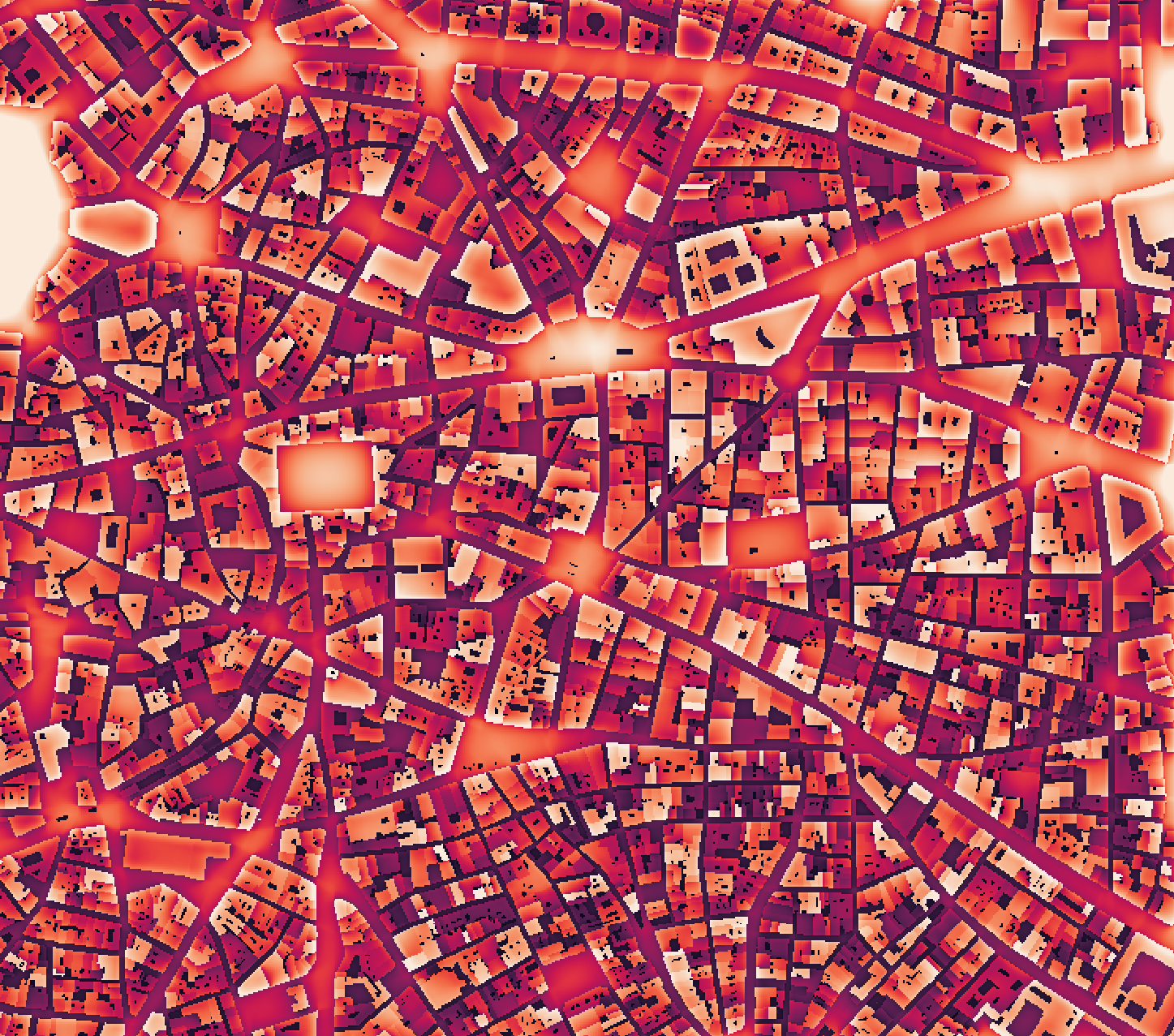from cityseer.metrics import visibilityVisibility from raster data
Generate a visibility analysis from raster data. This approach allows for blending building footprints with Digital Elevation Model (DEM) data to take elevation into account.
Use the visibility module to create a visibility analysis from raster data. The visibility will be generated based on the raster data provided to the visibility_from_raster method.
Pay particular attention to:
- The
input_pathparameter, which specifies the path to the input raster file. The file must exist and be in a format that can be read byrasterio, such as GeoTIFF. - The
out_pathparameter, which specifies where to save the output files. The filepath must exist. The extension of the output file will be.tifand the file will be saved in GeoTIFF format, which can be opened in QGIS.
There is a performance trade-off for the view_distance and input file resolution. A larger view_distance or higher resolution will result in a more detailed graph but may take longer to compute and require more memory.
visibility.visibility_from_raster(
"recipes/visibility/images/madrid_rast_ht.tif",
"recipes/visibility/images/madrid_vis_from_rast",
view_distance=100,
observer_height=1.5,
) # defaults to local UTMINFO:cityseer.metrics.visibility:Running visibility graph from raster file: /Users/gareth/dev/cityseer-examples/recipes/visibility/images/madrid_rast_ht.tif.
INFO:cityseer.metrics.visibility:Raster resolution: 2.0 meters per pixel
100%|██████████| 638775/638775 [00:40<00:00, 15663.54it/s]Visualised as harmonic on a dataset of building rasters including building rooftop heights. (No DEM data used in this example.)

